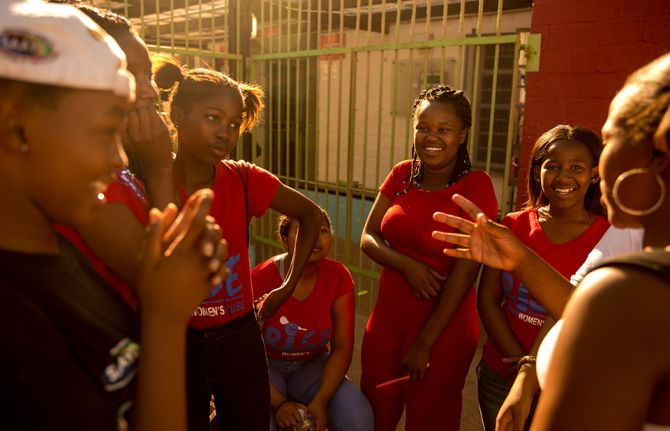

Press Statement
UNAIDS welcomes important study results which find no significant difference in HIV risk among three highly effective contraceptive methods
14 June 2019 14 June 2019UNAIDS also calls for urgent action to integrate full HIV combination prevention with sexual and reproductive health services as study finds extremely high HIV incidence among women
GENEVA, 14 June 2019—UNAIDS welcomes new results from the Evidence for Contraceptive Options and HIV Outcomes (ECHO) study showing that there is no significant difference in risk of HIV infection among three highly effective contraceptive methods. The large-scale study, conducted in Eswatini, Kenya, South Africa and Zambia, examined the risk of HIV acquisition when using an injectable contraceptive, an implant inserted under the skin and a copper-releasing intrauterine device.
The ECHO study was conducted as part of efforts to collect better data following a number of observational studies which suggested a possible increased risk of HIV acquisition for women using progestogen-only injectable contraception. “These results are of critical importance to women in areas with high prevalence of HIV,” said Gunilla Carlsson, UNAIDS Executive Director, a.i.. “They give women and girls the information they need to make informed decisions over the choice of contraception methods available to them.”
However, the study also shines a spotlight on the severe impact that HIV is having on women and girls in eastern and southern Africa. It found extremely high incidence of HIV infections among the women participating in the trial—an average of 3.8% per year—incidence was even higher among young women below the age of 25.
“Finding such high rates of new infections among young women through this study is deeply disturbing,” said Ms Carlsson. “It shows that despite conscious efforts to integrate family planning and HIV services to date, we are clearly not getting it done in a way or to the extent needed to really support women to protect themselves from HIV. Focused combination HIV prevention efforts must be urgently integrated and intensified within sexual and reproductive health services, particularly in eastern and southern Africa, to stop women from becoming infected with HIV.”
Integrating HIV prevention within contraceptive and other sexual and reproductive health services in high prevalence settings includes offering HIV literacy, testing, linkage to antiretroviral therapy for people testing HIV-positive, partner testing, condom promotion and pre-exposure prophylaxis to protect against HIV. It should include linking women with particularly high risk to broader social and economic support.
Ensuring that young women are able to access a broad range of effective contraceptive methods and have the tools to protect themselves from HIV will help to ensure that women have agency over their own sexual and reproductive health and rights.
Following the new study results the World Health Organization will convene a Guideline Development Group to review its existing recommendations concerning women’s eligibility for using various contraceptive methods if they are at high risk of HIV. Updated recommendations are expected by the end of August 2019.
UNAIDS
The Joint United Nations Programme on HIV/AIDS (UNAIDS) leads and inspires the world to achieve its shared vision of zero new HIV infections, zero discrimination and zero AIDS-related deaths. UNAIDS unites the efforts of 11 UN organizations—UNHCR, UNICEF, WFP, UNDP, UNFPA, UNODC, UN Women, ILO, UNESCO, WHO and the World Bank—and works closely with global and national partners towards ending the AIDS epidemic by 2030 as part of the Sustainable Development Goals. Learn more at unaids.org and connect with us on Facebook, Twitter, Instagram and YouTube.
Contact
UNAIDS GenevaSophie Barton-Knott
tel. +41 22 791 1697
bartonknotts@unaids.org
UNAIDS Media
tel. +41 22 791 42 37
communications@unaids.org
Joint statement
Press centre
Download the printable version (PDF)
